Pteraster tesselatus Ives, 1888Common name(s): Slime star, Cushion star |
|
| Synonyms: |  |
| Phylum Echinodermata
Class Asteroidea Order Spinulosida Suborder Eugnathina Family Pterasteridae |
|
| Pteraster tesselatus from 10 m depth, Sares Head. | |
| (Photo by: Dave Cowles, July 1997) | |
How to Distinguish from Similar Species: No other common local species secretes the copious slime nor has the elevated membrane over the aboral surface. Dermasterias imbricata is not as thick, the madreporite can be seen, and is usually reddish brown with gray or purple. Asterina miniata and Mediaster aequalis have obvious plates (ossicles) on the aboral surface.
Geographical Range: Bering Sea to Carmel Bay, CA
Depth Range: 5 to 950 m
Habitat: Rocky areas
Biology/Natural History: Diet includes sponges such as Halochondria panicea, Aplidium, Didemnum, and Corella inflata tunicates, and bivalves such as the falsejingle Pododesmus macroschisma. Ambulacral grooves may have the symbiotic polychaete worm Arctonoe pulchra, A. vittata, or Ophiodromus pugettensis.
| Return to: | |||
| Main Page | Alphabetic Index | Systematic Index | Glossary |
References:
Dichotomous Keys:Kozloff 1987, 1996
General References:
Gotshall
and Laurent, 1979
Morris
et al., 1980
O'Clair
and O'Clair, 1998
Scientific Articles:
Emlet, Richard B., 1994. Body forms and patterns of ciliation in nonfeeding larvae of echinoderms: functional solutions to swimming in the plankton? American Zoologist 34: pp. 570-585
Knott, K. Emily, and Gregory A. Wray, 2000. Controversy and consensus
in Asteroid systematics: new insights to Ordinal and Familial
relationships. American Zoologist 40:3 pp. 382-392
Levina EV, Andriyaschenko PV, Kalinovsky AI, Stonik VA., 1998. New ophiuroid-type steroids from the starfish Pteraster tesselatus. J Nat Prod. 61(11):1423-6. (PubMed)
Mauzey, K.P., C. Birkeland, and P.K. Dayton, 1968. Feeding behavior of asteroids and escape responses of their prey in the Puget Sound region. Ecology 49: 603-619
McEdward, L.R., 1992. Morphology and Development of a Unique Type of Pelagic Larva in the Starfish Pteraster tesselatus (Echinodermata: Asteroidea). Biological Bulletin 182(2) 177-187 (Abstract)
McEdward, Larry R. and Benjamin G. Miner, 2006. Estimation and interpretation of egg provisioning in marine invertebrates. Integrative and Comparative Biology 46:3 pp 224-232
Rodenhouse, I.Z. and J.E. Guberlet, 1946. The morphology and behavior of the cushion star, Pteraster tesselatus (Ives). University of Washington Publications in Biology 12: 23-47
General Notes and Observations: Locations, abundances, unusual behaviors:
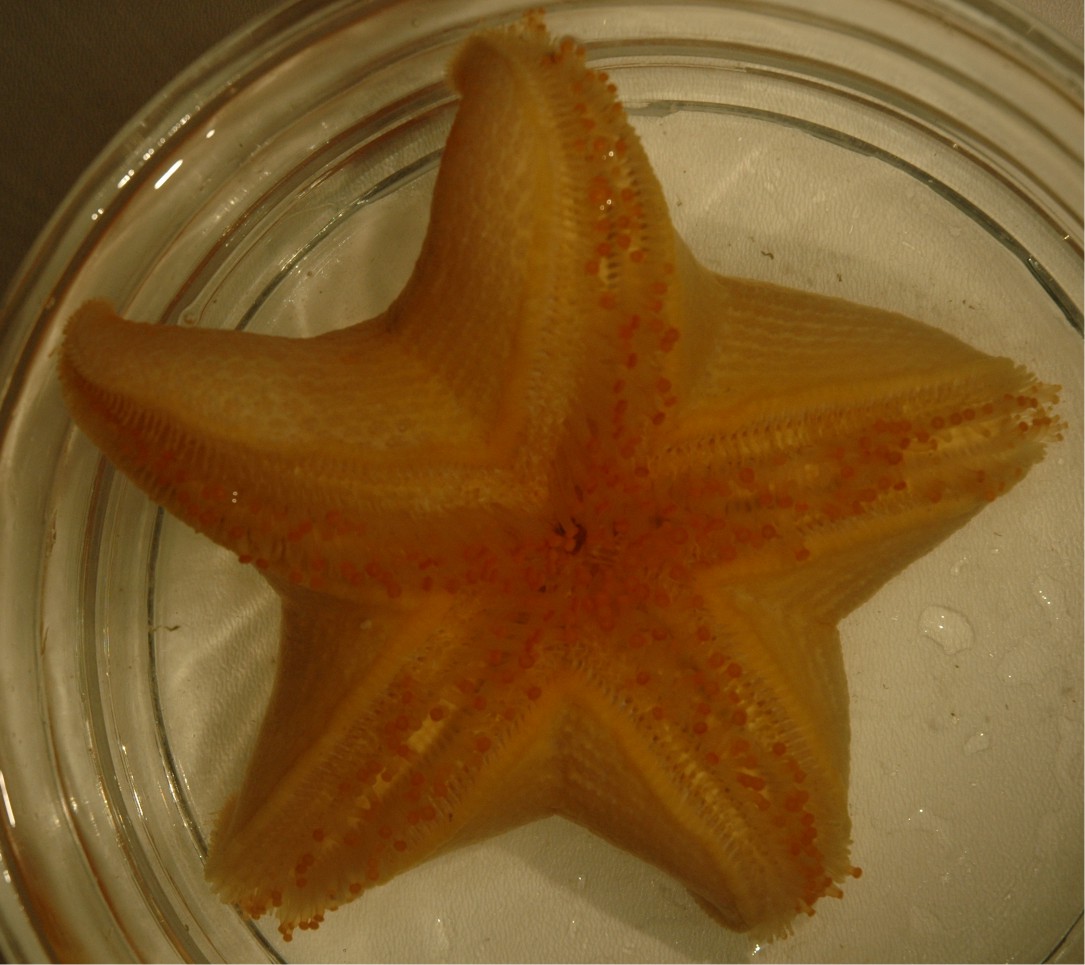
Underside of Pteraster tesselatus. Ray
length of this
individual is 8 cm. Photo by Dave Cowles June 2006.

A closeup view of the tube feet along one ambulacrum. Photo
by
Dave Cowles, June 2006
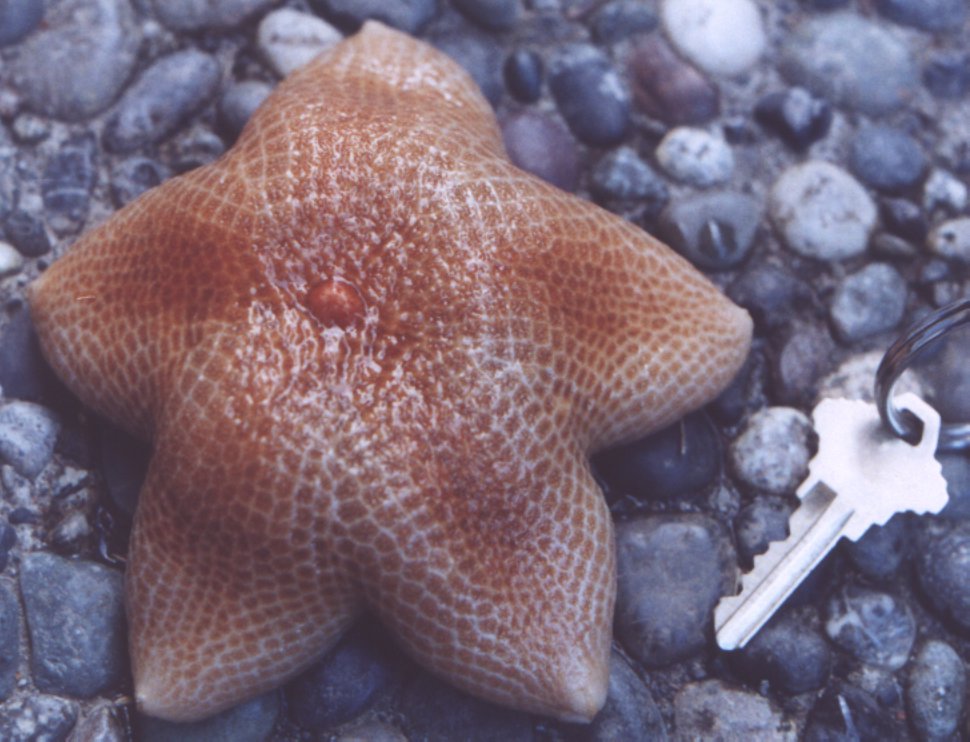
Another individual from subtidal Sares Head. Note the
flabby-looking
aboral side, caused by the extra membrane above the actual aboral
side.
This individual will
be in danger of dying when placed back into seawater if any bubbles
have gotten into the space between the outer membrane and the aboral
surface,
because it will
cause the animal to float around the tank uncontrollably.
This
species is best left submerged at all times. Photo by Dave
Cowles,
July 2000.
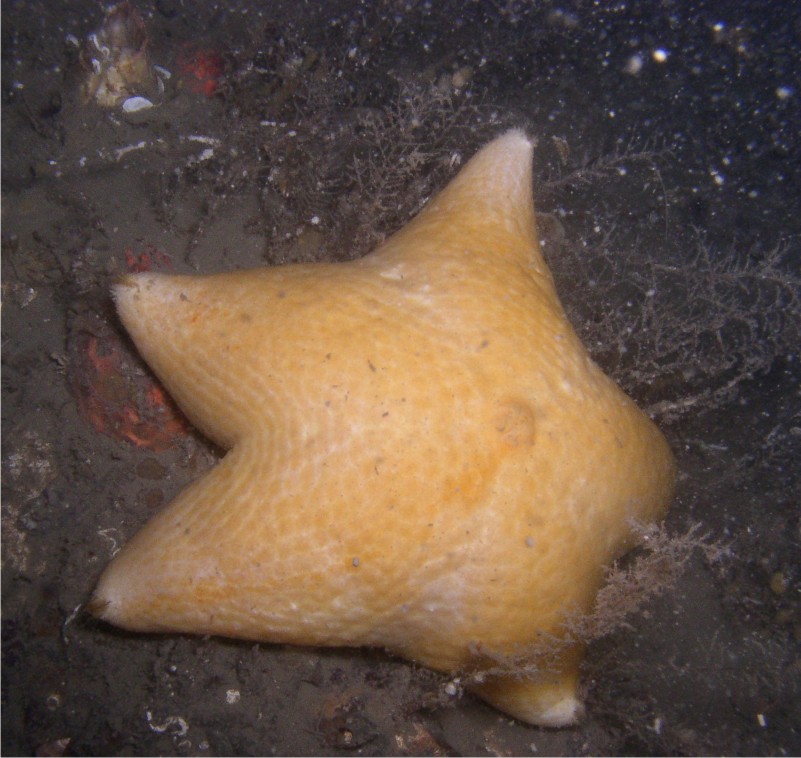
In this photo, taken underwater off Northwest Island by Kirt Onthank
(Feb 2006), Pteraser tesselatus is seen near
hydroids and the sea
cucumber
Psolus
chitonoides.

This colorful individual from Sares Head has a span of about 15 cm.
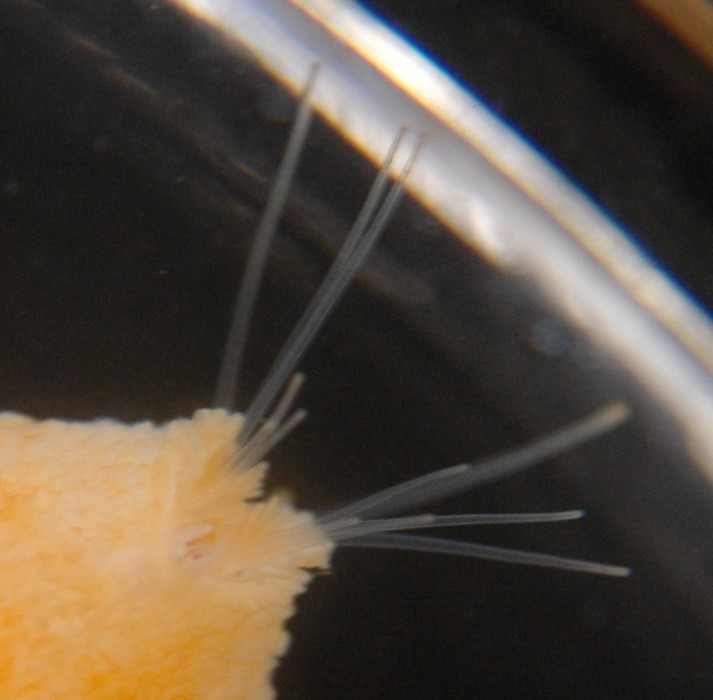
This closeup of the end of a ray (aboral view) shows how the tube feet
at the ray tips are extended when the animal is actively moving
 |
 |
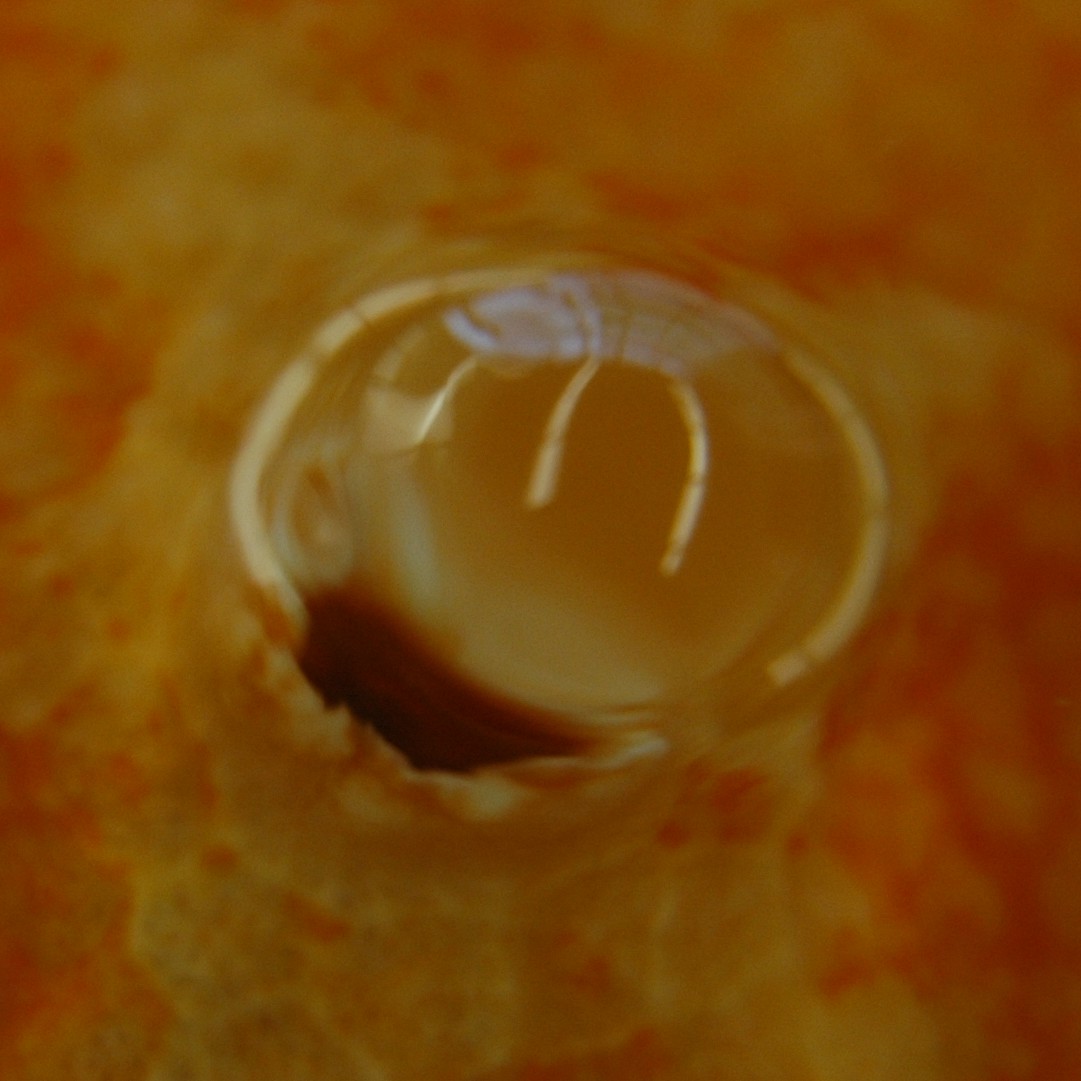 |
| Closed | Partially open | Fully open and exhaling. Water flow is great enough to cause a distortion of the water surface 2 cm above opening. |
| This species exhales a stream of water through its dorsal opening every few minutes. This series of photos shows the dorsal opening closed (as it appears just after an exhalation), then partially open as it often appears, and finally in the fully open, exhaling condition. The full flow of the exhalation takes around 5 seconds. Click Here to view a movie of the full inhalation-exhalation cycle. | ||
The Vancouver Aquarium (http://oasis.vancouver.wsu.edu/heceta/Pteraster.htm) states that this species is circumpolar; however, their photos do not look like this species. Our local species may be the subspecies arcuatus.
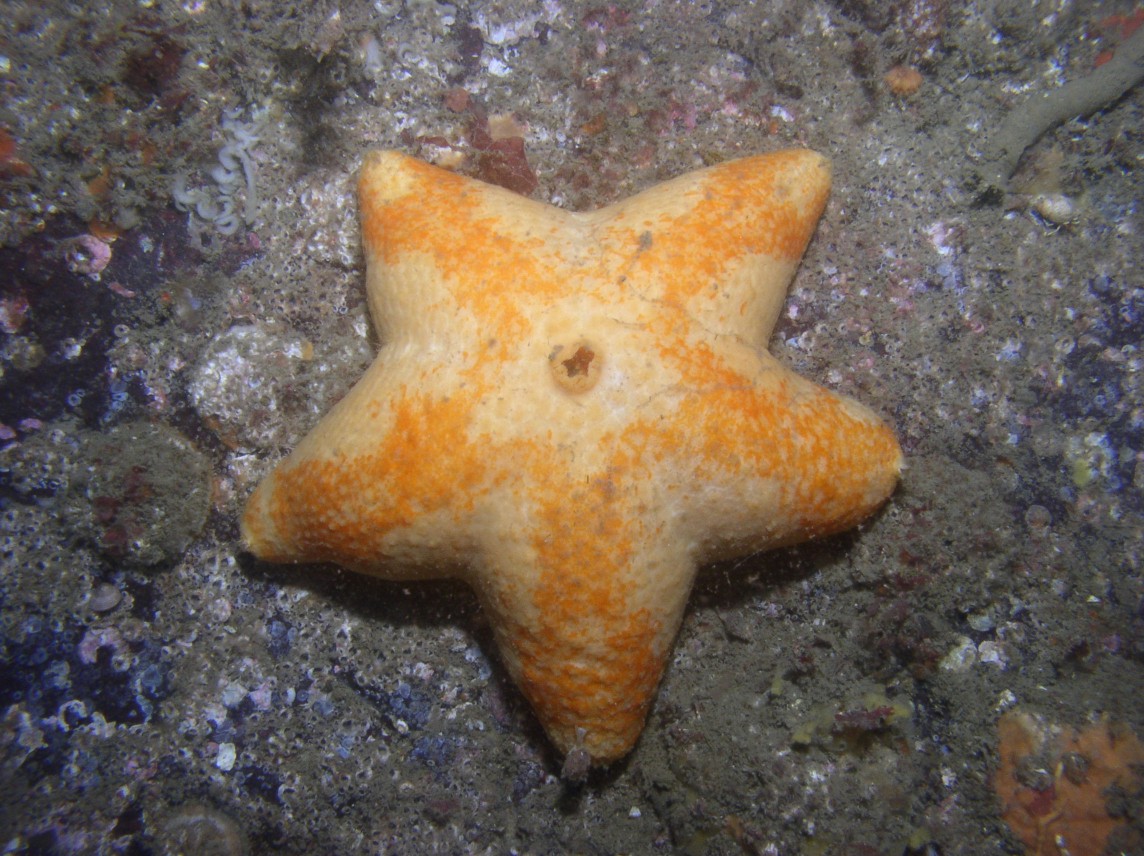
An underwater photo by Kirt Onthank, June 2007
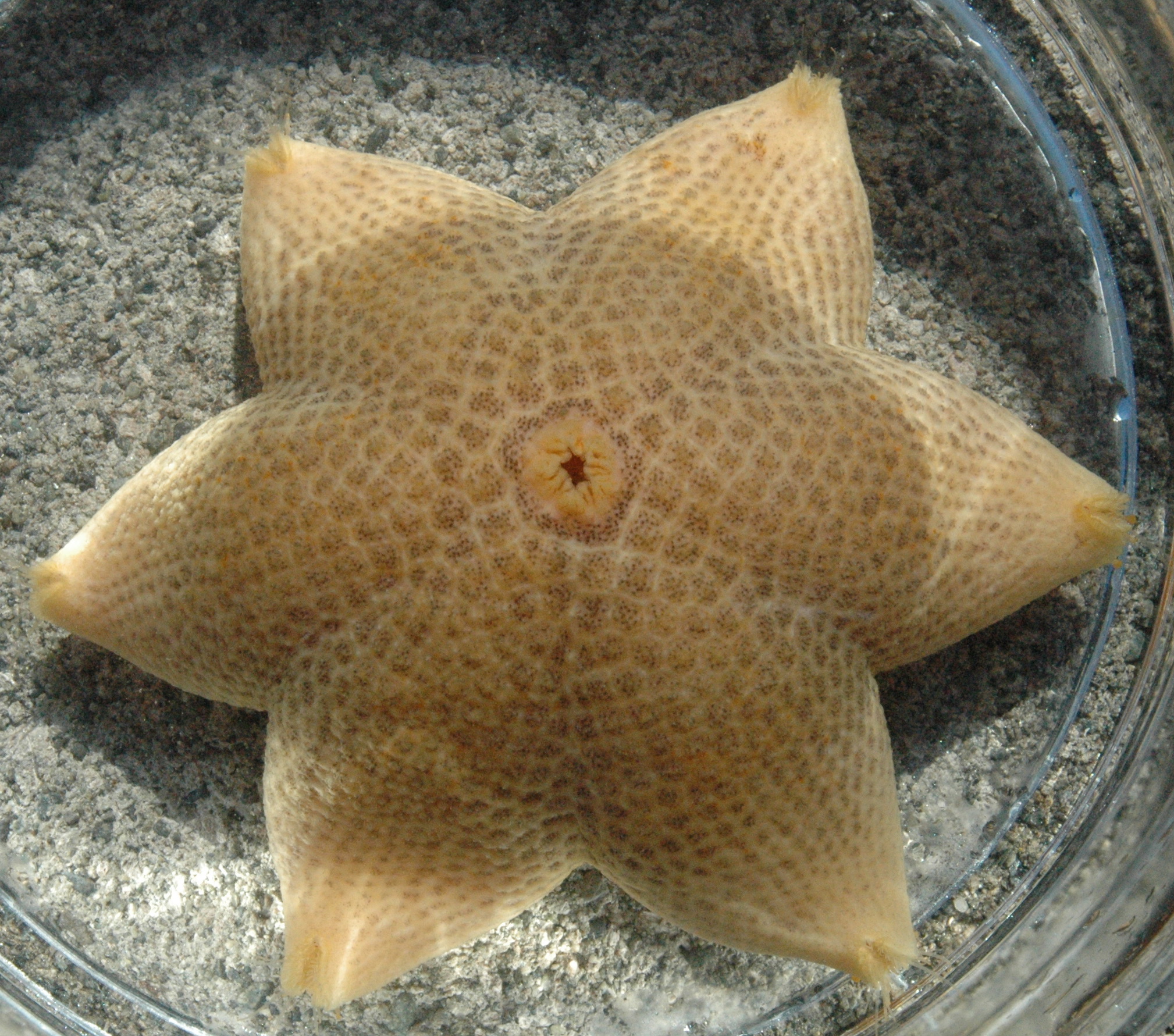
Occasionally individuals with 6 rays instead of 5, such as the 12-cm
diameter individual, are found. Photo by Dave Cowles, July
2013.
Authors and Editors of Page:
Dave Cowles (2005): Created original page